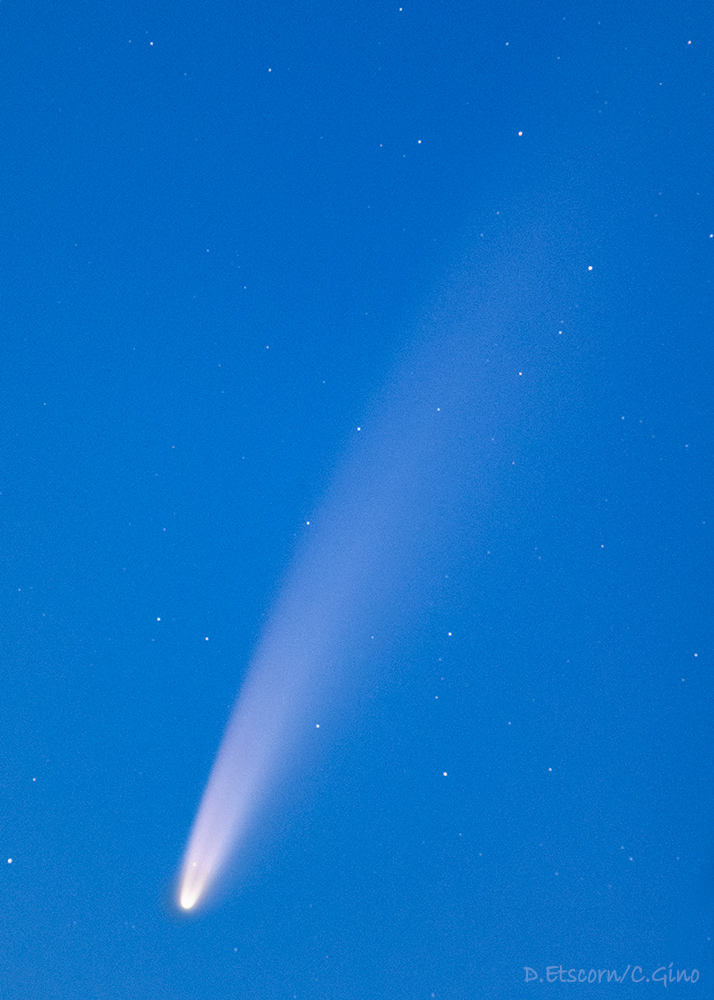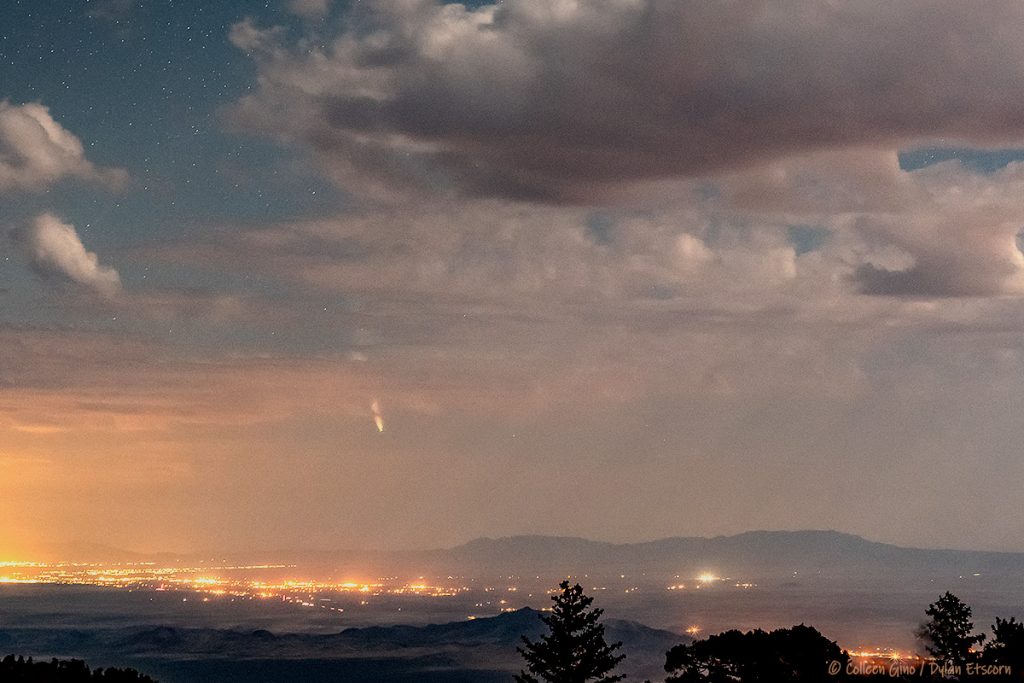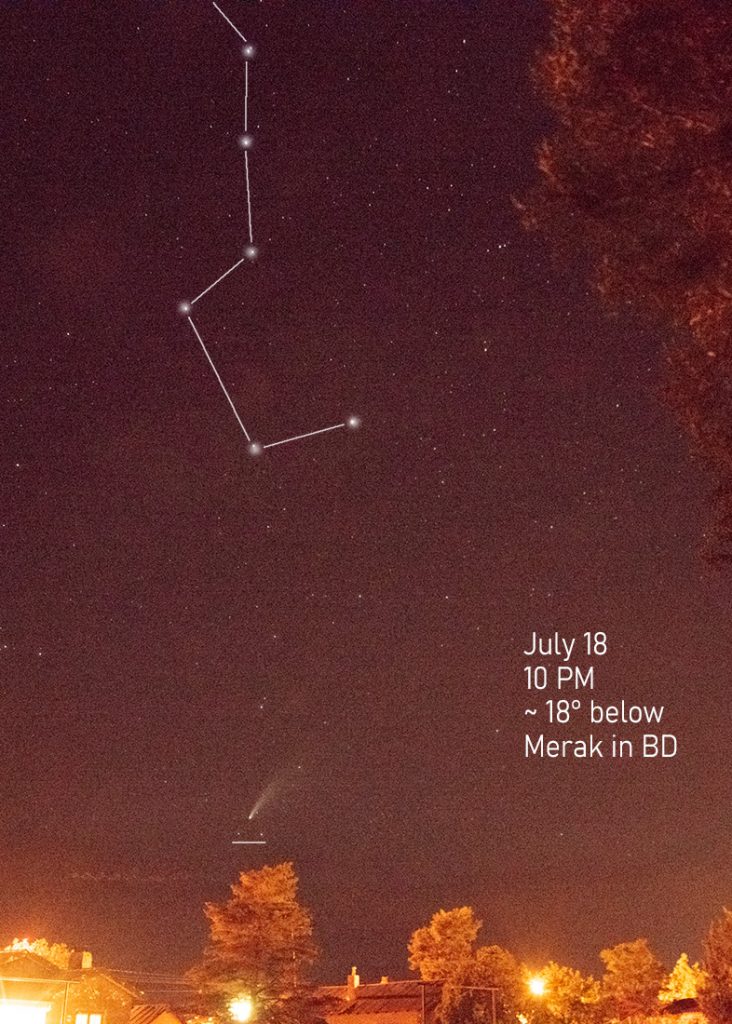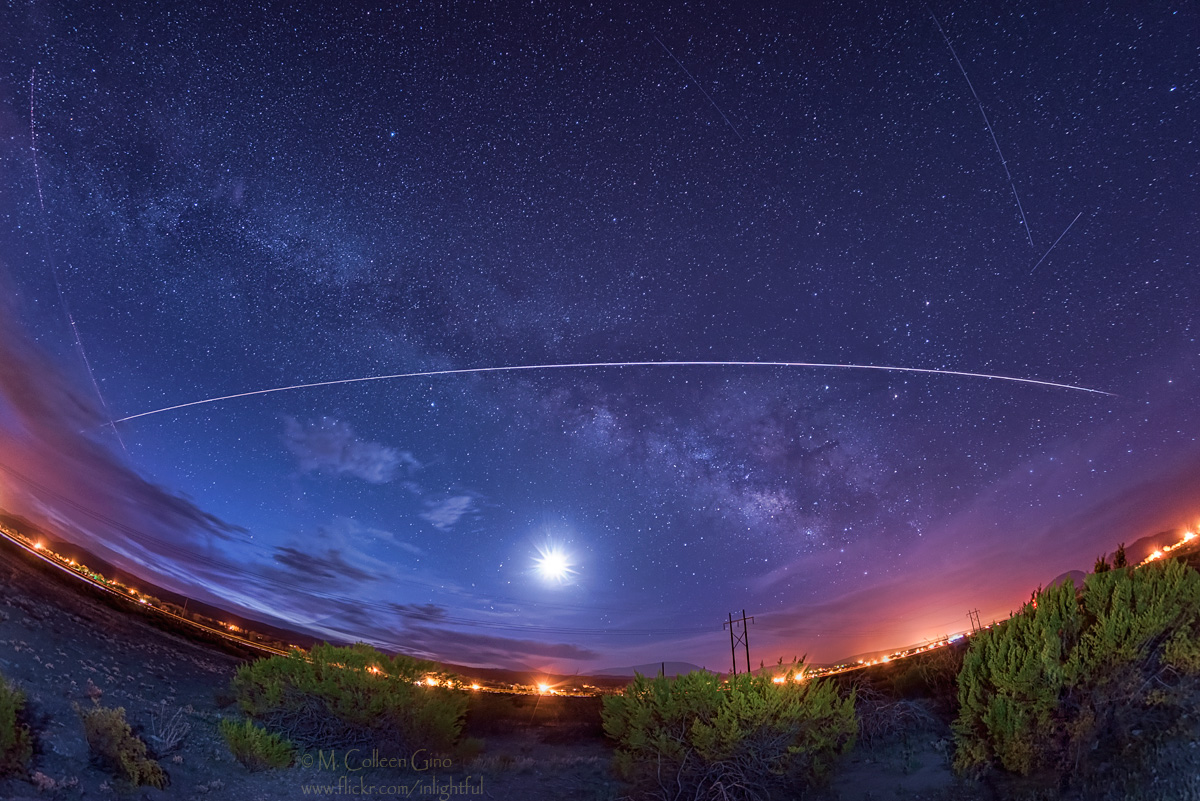People all over the world have been trying to catch a of glimpse of Comet NEOWISE since news of its viewability hit the media early in the month. We avid sky watchers at New Mexico Tech’s Magdalena Ridge Observatory caught our first peek in the early morning hours of July 8 and have been looking out for it since.

The image below was taken at 4:40 AM MDT on July 9 by MROI staff members Dylan Etscorn and Colleen Gino in San Antonio, New Mexico. They were using a Nikon D850 on MROI’s Bachman-Challener Outreach Telescope, a 100mm Takahashi Refractor purchased with funds donated to the MRO Outreach Department in 2017.

On the morning of July 10, they traveled to San Marcial. New Mexico, in the wee hours of the morning to photograph Comet NEOWISE from a trestle bridge, seen below.

With several successful comet encounters under their belts, Dylan and Colleen took the trek up to the Magdalena Ridge Observatory on July 11th with hopes of photographing the comet over the city of Socorro 6,000 feet below. Although the skies were pristinely clear that evening, by the early morning when the comet would be visible monsoon clouds had rolled in and almost totally obscured the comet from view. The view you see in the image below was to be the last morning view of Comet NEOWISE for our enthusiastic observers.

Their next observation of the comet was made almost a week later on July 18, this time in the evening at about 10 PM MDT from a neighborhood with many street lights. While not photographically impressive, this view, seen below, gave our astrophotographers the information they needed to know when and where to look for Comet NEOWISE on future observing expeditions.

Now knowing where to look, they immediately packed up their gear and drove to darker site, excited to photograph the first evening apparition of the comet, especially since the ion tail was finally visible. But once again the cloudy monsoon skies prevailed, and by the time they got to their dark sky site a mere 10 minutes after their first sighting under the street lights, Comet NEOWISE was mostly obscured by clouds.

At this point we’re keeping our fingers crossed for some clear moments in our seasonally cloudy skies!
M. Colleen Gino, MRO Assistant Director of Outreach and Communications


